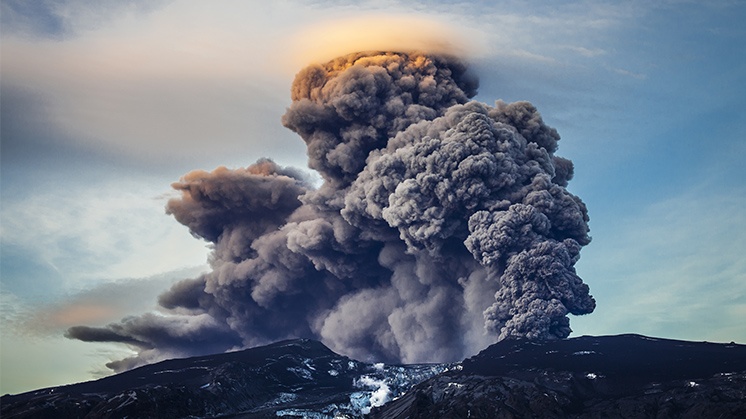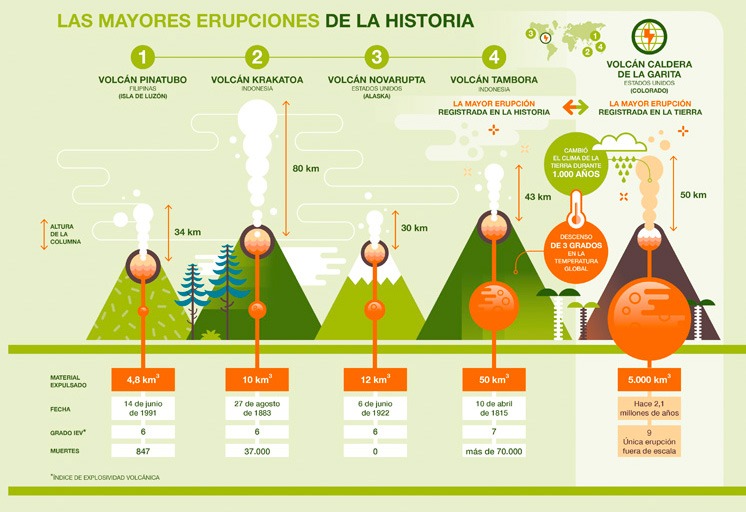The most violent volcano eruptions in history
With the power of thousands of atomic bombs
Volcanoes have darkened the skies of the whole planet, killing 82,000 people and burying cities and entire civilisations. Despite scientific progress, volcanoes are still unpredictable and in recent years eruptions have become more recurrent. In 2021 alone, volcanoes such as Etna in Italy, Fagradalsfjall in Iceland, La Soufrière in the Caribbean and Cumbre Vieja on the Canary Island of La Palma have been active.

15 JUNE 1991. The Pinatubo volcano in the Philippine island of Luzón awakened after 500 years of inactivity, discharging over 10 km3 of lava and ash at a height of 34 km. It was the fourth most violent eruption in history, even bigger than other incredibly violent eruptions, such as those of Krakatoa and Mount Vesuvius, which buried and destroyed Pompeii in AD 79. In addition, the latter is one of the first volcanoes for which historical reference can be found.
Different studies have concluded that the most violent volcano eruptions in history would be 100 times greater than the energy released by the explosion of the world's entire nuclear arsenal. How can we measure how violent an eruption is? Scientists have created a scale from 0 to 8, known as the Volcanic Explosivity Index (VEI) which measures the volume of discharged materials and the height of the column.

See infographic: biggest volcano eruptions in history [PDF] External link, opens in new window.
Supervolcanoes
The 8th index is reserved for supervolcanoes, which have magma chambers that are one thousand times larger than conventional chambers, but they do not form mountains, since these are underground magma deposits. The most violent eruption registered in history was that in the La Garita Caldera in the United States. It occurred 2.1 million years ago and formed a 35 x 75 km crater, drastically changing the climate on Earth.
Fortunately, these eruptions are rare: they occur every 50,000 or 100,000 years. And thank goodness for that, because the last one, the Toba Caldera (Indonesia), killed 60% of the population on earth 70,000 years ago. The biggest supervolcano on Earth was discovered in 2013: the Tamu Massif, with a 4 km height and a 640 km width, a submarine shield volcano located in the Pacific Ocean, east of Japan.
The largest volcano in Europe
According to Greek mythology, the forges of the Hephaestus, God of Fire, were located underneath Mount Etna. This volcano is still active and is the largest in Europe, with a height of 3.3 km. It has been active over the past 2,000 years but its eruptions have not been dangerous. Since 2018, eruptions have become more recurrent, in fact, the last one occurred on 21 September 2021 and the cloud reached 9 kilometres.




